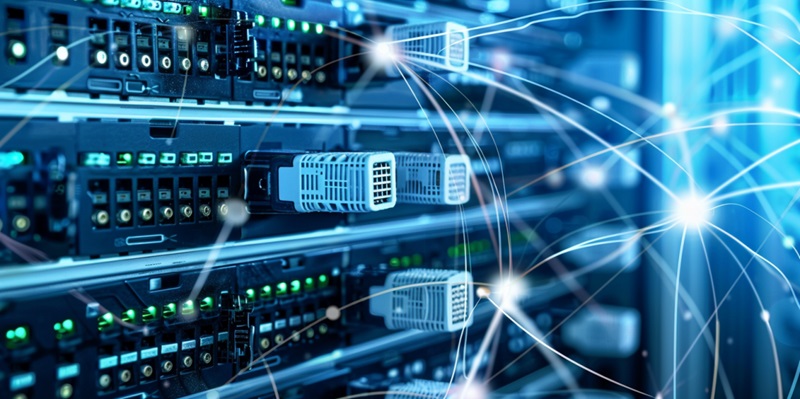The pace of change in technology today is exponential. With each leap forward, business networks face pressure to adapt, supporting the rapid incline in data consumption, processing demands, and new forms of connectivity. Below we dive into the effects of specific emerging technologies and how they are poised to redefine the future of business infrastructure.
The Rise of the Metaverse in Business Networking
The Metaverse: A Catalyst for Data Consumption
The Metaverse is emerging as a driving force in the digital sphere, blending the realms of social interaction, commerce, and collaborative work. As users flock to these immersive virtual environments, the data appetite of the Metaverse balloons. Businesses are acknowledging the reality of this disruption—optimizing networks to sustain the spike in data consumption is no longer optional; it’s imperative.
Network Adaptation for the Metaverse
Networks must evolve to support the real-time, interactive demands of the Metaverse. Latency-sensitive applications, such as virtual meetings or live collaborations, necessitate transformations in network design. This involves not only a bandwidth upgrade but also a structural evolution—businesses must ensure that their networks can deliver data quickly and reliably to create a truly seamless virtual presence.
Extended Reality (XR) and Network Infrastructure
The Technological Demands of XR
Extended Reality stands at the forefront of merging the digital and tangible worlds, but this union demands immense data throughput. High-fidelity visuals, realistic haptics, and precise spatial audio—all staples of XR—are data-intensive. The technological landscape is clear: without robust networks capable of high-volume, high-speed data transmission, the potential of XR cannot be fully realized.
Preparing Networks for XR Integration
The promise of XR lies in its real-time interactive capabilities, which hinges on networks with minimal lag. Businesses must prioritize infrastructure that can dynamically scale with sudden bursts of data while maintaining stability. The ability to accommodate immersive environments, without the drawbacks of latency or inconsistency, will be a differentiator in the market.
The Impact of Artificial Intelligence on Data Flows
AI’s Data-Driven Transformation
Artificial Intelligence is redefining how businesses operate, utilizing vast amounts of data to unearth insights and facilitate decision-making. From automating tasks to enhancing customer experiences, AI’s ubiquity is becoming evident. However, this thirst for data puts a strain on network infrastructure, with implications spanning storage, processing speed, and end-to-end latency.
Revamping Networks for AI Efficiency
As AI applications grow more sophisticated, they fuel the need for networks that can support edge computing—processing data closer to the source. Such a shift would minimize transmission times, allowing AI systems to respond swiftly. Companies must adapt to this reality, investing in an edge-centric network topology to ensure data can be processed efficiently, securely, and without delay.
Quantum Technology: Next-Level Computational Power
Quantum Computing and Network Needs
Quantum computing is set to redefine the landscape of computational problem-solving. Its impact will be profound in fields that demand intricate calculations, such as cryptography and materials science. The sheer complexity of quantum computing dictates equally complex network requirements—high-capacity systems that can handle exponential data increases without compromising integrity or speed.
Connectivity for Quantum Developments
The fiber network backbone must be enhanced to meet the connectivity demands of quantum computing. Data security and storage become even more critical, considering the sensitivity and volume of quantum data. Traditional networks face the risk of becoming bottlenecks, which could stifle quantum advancements. To avoid this, businesses need to equip themselves with infrastructure that’s scalable and quantum-ready.
Distributed Ledger Technology’s Network Implications
Blockchain and IoT: The Synergy of Data
The convergence of Distributed Ledger Technology (DLT) and the Internet of Things (IoT) holds the key to new levels of data sharing and device interoperability. As IoT devices proliferate, generating and exchanging an ever-growing tide of data, robust networks become the glue that binds this ecosystem. Secure, reliable, and timely data flow is non-negotiable.
Strengthening Network Foundations for DLT
DLT fosters decentralized systems, enabling secure and transparent transactions. However, the surge in data transactions demands network architecture capable of handling increased loads. Preparing for the rise of DLT accordingly involves fortifying network foundations to manage both the volume and the security demands of a decentralized, multi-user environment.
The Road Ahead for Business Networks
Embracing Technological Agility
Adaptability is the currency of the future. Businesses must embrace agility in their network infrastructures to keep pace with emerging technologies. These networks need not just scale with growth but also flex with the demands of real-time data transactions and the shifting landscapes of connectivity technologies.
Strategic Investments for Future-Proof Networks
The technological landscape is evolving at a breakneck pace, compelling corporate networks to evolve rapidly to keep up. This rapid evolution is driven by an ever-increasing need for data, enhanced processing capabilities, and innovative forms of digital communication. Emerging technologies are at the forefront of this transformation, carrying the potential to completely revamp the foundation of business infrastructure.

